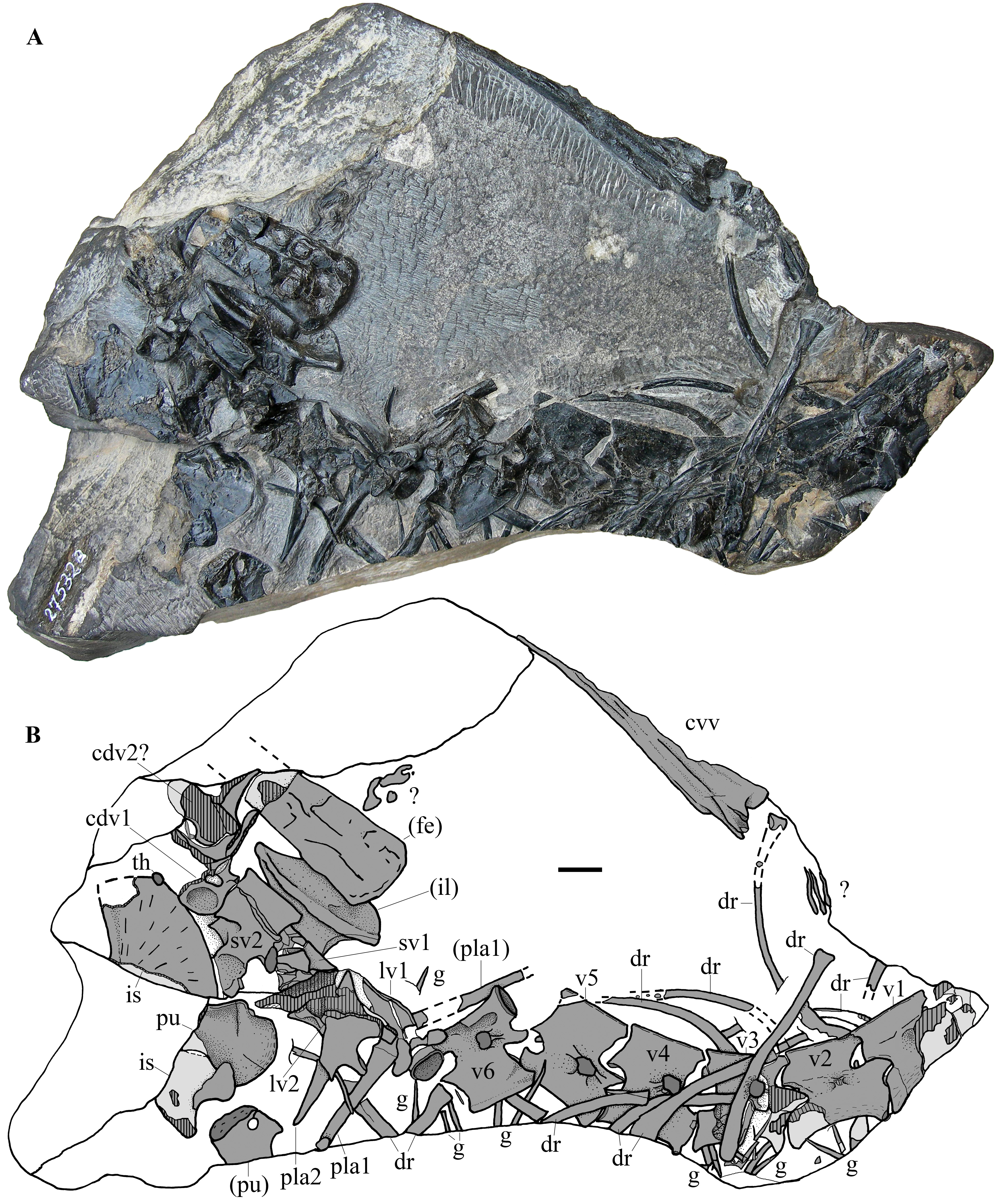RAIBLIANIA CALLIGARISI GEN. N., SP. N., A NEW TANYSTROPHEID (DIAPSIDA, TANYSTROPHEIDAE) FROM THE UPPER TRIASSIC (CARNIAN) OF NORTHEASTERN ITALY
DOI:
https://doi.org/10.13130/2039-4942/13041Keywords:
Reptilia; Archosauromorpha; Predil Limestone; Friuli Venezia Giulia; Julian Alps.Abstract
Tetrapod remains are extremely rare in the early Carnian (Late Triassic) Calcare del Predil Formation on the Italian side of the Julian Alps (Friuli Venezia Giulia Autonomous Region), which yielded the Raibl fossil assemblage including the famous "Raibl ichthyofauna". A new tanystropheid archosauromorph, Raibliania calligarisi, is here named based on a partial skeleton found in this formation along the Prasnig Brook. The new taxon is similar to Tanystropheus, sharing with it the very elongated cervical vertebrae, but is characterized by the presence of relatively large button-like teeth; apex of the neural spines not transversely thickened; articular facets on the upper corners of the neural spines of the dorsal vertebrae; short and distally pointed pleurapophyses of the second and last 'lumbar' vertebra; ilium with a long preacetabular process bearing a robust and transversely thick tuberosity and a medial ridge bordering the entire ventral part of the iliac blade; and pubis with a cranial process. Tanystropheids lived in the present day Alps and Prealps of Friuli Venezia Giulia Region from the late Anisian to the mid-late Norian and were an important component of the coastal reptile faunas, although they were less common than eusauropterygians and placodonts during the early Carnian. Tanystropheids with extremely elongated cervical vertebrae are reported in this area from the upper Anisian to the lower Carnian.
Metrics

Downloads
Published
Issue
Section
License
The journal allow the author(s) to hold the copyright without restrictions.






